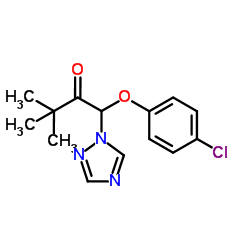Low concentrations of atrazine, glyphosate, 2,4-dichlorophenoxyacetic acid, and triadimefon exposures have diverse effects on Xenopus laevis organ morphogenesis.
Jenny R Lenkowski, Gabriela Sanchez-Bravo, Kelly A McLaughlin
Index: J. Environ. Sci. (China) 22(9) , 1305-8, (2010)
Full Text: HTML
Abstract
Many chemicals are released into the environment, and chemical contamination has been suggested as a contributing factor to amphibian declines. To add to a growing body of knowledge about the impact of individual chemicals on non-target organisms, we examined the specificity of deformities induced by exposure to four pesticides (atrazine, 2,4-dichloropheoxyacetic acid (2,4-D), triadimefon, and glyphosate) in the model amphibian species, Xenopus laevis. We focused on the period of organ morphogenesis, as it is frequently found to be particularly sensitive to chemical exposure yet also commonly overlooked. We found similar levels of intestine malformations and edemas, as well as disruption of skeletal muscle, in atrazine and triadimefon exposed tadpoles. The effects of 2,4-D were only apparent at the highest concentrations we examined; glyphosate did not induce dramatic malformations at the concentrations tested. While researchers have shown that it is important to understand how chemical mixtures affect non-target organisms, our results suggest that it is first crucial to determine how these chemicals act independently in order to be able to identify consequences of individual pesticide exposure.
Related Compounds
| Structure | Name/CAS No. | Molecular Formula | Articles |
|---|---|---|---|
 |
Triadimefon
CAS:43121-43-3 |
C14H16ClN3O2 |
|
Is the amphibian X. laevis WEC a good alternative method to ...
2011-09-01 [Reprod. Toxicol. 32(2) , 220-6, (2011)] |
|
Stage-dependent abnormalities induced by the fungicide triad...
2011-02-01 [Reprod. Toxicol. 31(2) , 194-9, (2011)] |
|
Changes of thyroid hormone levels and related gene expressio...
2011-11-01 [Environ. Toxicol. Pharmacol. 32(3) , 472-7, (2011)] |
|
Persistence of repeated triadimefon application and its impa...
2012-01-01 [J. Environ. Sci. Health B 47(2) , 104-10, (2012)] |
|
Analysis of microRNA and gene expression profiling in triazo...
2013-01-07 [Toxicology 303 , 94-8, (2013)] |